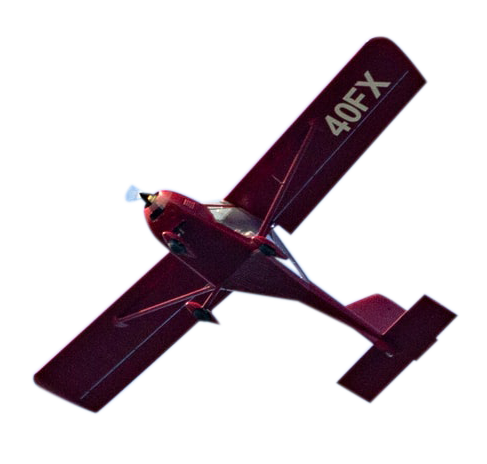 Controlled Airspace crossing
Controlled Airspace crossing
Crossing controlled airspace (CAS) and gaining the clearance to do so is a relatively easy thing to do once the appropriate planning has been completed. When planning to transit CAS, it is useful to anticipate a possible delay to obtaining a clearance and to identify an area in which you can hold or orbit, although often, with an early call there will be no delay. It is important to note the frequencies and any NOTAM that may apply to the CAS you intend to transit. Think about your routing in relation to the active runway alignment. You are much more likely to get a crossing approved over the runway, or to the approach end, if your track is perpendicular to it than aligned with it and also you should avoid the climb-out area, thus minimising the time of any potential conflict with the local traffic.
Some volumes of CAS, such as the Luton CTR (Figure 1) have Visual Reference Points (VRP) annotated with E/E. These are the Entry/Exit points via which pilots should anticipate clearance and routeing instructions. Where a VFR lane exists, information relating to their use is found in the aerodrome directory of the AIP at AD2.22 (Flight Procedures) for the relevant aerodrome. Remember though that holding/orbiting at VRPs might not give sufficient displacement from the boundary and hence could lead to an inadvertent infringement.

Once airborne and approaching the airspace, listen to the frequency to gain extra information about local activity and the runways in use at airfields within.
Choose an opportune moment to make your initial call (appending ‘requesting transit clearance’ can be useful). Consider the use of aid-memoirs such as the R/T ‘kneeboard’ shown as a template when requesting a transit of CAS.

Observe any request to standby (there is no need to acknowledge a “standby request”) and then, when asked of your intentions by ATC, keep your reply concise but ensure that you include the following:
- Full callsign
- Aircraft type
- Point of departure and destination
- Present position and altitude
- Whether the request is for a VFR or IFR clearance
- Your requested routing.
Once issued, prior to entering the airspace read-back the clearance, in full, as provided by the ATC Unit. If there is any doubt regarding the clearance clarify with ATC PRIOR to entry.
Once entering controlled airspace, acknowledge and confirm the change of service and then comply with ATC instructions.
Be prepared to have your initial plan adapted, either as part of the initial clearance or possibly while you are transiting the controlled airspace.
The instruction to “Standby”, the issuing of a squawk or the provision of any type of service is not an ATC clearance to enter Controlled Airspace. An instruction to “Remain Outside Controlled Airspace” on the first reply from the controller does not mean your transit is already refused, it merely warns you not to enter until a formal clearance is issued.
If you are instructed to “pass behind” IFR traffic on final approach, consider wake turbulence and do not pass too close. Commercial traffic may receive a collision avoidance notification if you come into close proximity.
Have an alternate route planned avoiding the controlled airspace should a crossing not be available.

